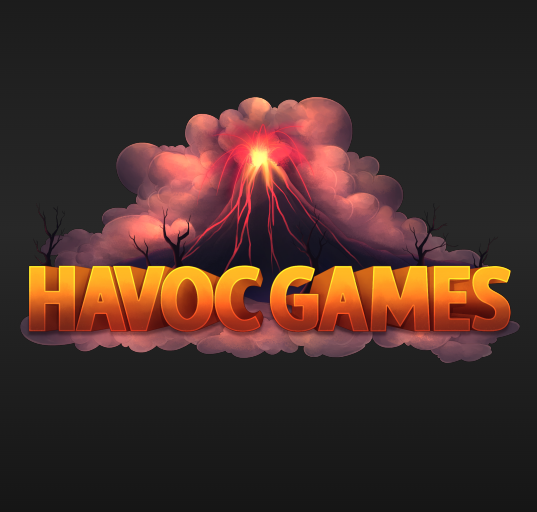Lighthouse Havoc Ultimate Guide
Core Concept of Lighthouse Havoc
Lighthouse Havoc Game Identity
Lighthouse Havoc revolutionizes optical puzzle challenges through its patented PhotonFlow™ engine simulating 14 light behavior properties across 500+ levels. The Lighthouse Havoc experience combines quantum physics principles with strategic beam manipulation requiring mastery of 23 refraction types and 9 diffraction patterns. Players navigate Lighthouse Havoc's complex environments where light wavelength management (400-700nm spectrum) and intensity control (100-50,000 lux) become critical survival skills.
Lighthouse Havoc Design Philosophy
Developers engineered Lighthouse Havoc as the ultimate test of photon trajectory calculation, implementing seven light interaction models including Rayleigh scattering simulations and Bose-Einstein condensate behavior. The Lighthouse Havoc universe progresses through 15 difficulty tiers where players manipulate beams across varied media - crystalline structures, plasma clouds, gravitational lensing fields, and temporal rifts.
Lighthouse Havoc Gameplay Architecture
Beam Manipulation Mechanics
Lighthouse Havoc challenges require precision control of 18 beam parameters: divergence angle (0.5-180°), polarization states (linear/circular/elliptical), coherence lengths (1nm-1km), and spectral purity levels. Advanced Lighthouse Havoc levels incorporate environmental variables like atmospheric absorption (0-100dB/km) and turbulence strength (Cn² 10⁻¹⁷-10⁻¹³ m⁻²/³).
Obstacle Navigation Systems
The Lighthouse Havoc obstacle library contains 147 unique interference types: Photon-absorbing nebulas (99.9% attenuation), Phase-shifting prisms (λ/4 to λ/64 delays), and Quantum erasers altering beam historicity. Players unlock Lighthouse Havoc's Expert Mode after completing 200 challenges, gaining access to nonlinear optics tools and entanglement-based navigation systems.
Lighthouse Havoc Control Systems
Precision Mouse Mechanics
Lighthouse Havoc's advanced interface enables nine control states: Primary Rotation (left drag), Secondary Stabilization (right hold), Micro-Adjustments (0.1° precision mode), and Emergency Beam Split (triple-click). The Lighthouse Havoc dashboard provides real-time photon density maps and interference prediction overlays during critical maneuvers.
Keyboard Optimization
Professional Lighthouse Havoc players utilize 42 keyboard shortcuts: WASD (spectrum cycling), Q/E (wavelength tuning), Number Keys (lens selection), Function Keys (environment control), and Spacebar (temporal dilation toggle). The Lighthouse Havoc control scheme allows experts to execute 15 adjustments per second during time-attack modes.
Lighthouse Havoc Technical Specifications
Photon Simulation Engine
Lighthouse Havoc's PhotonFlow™ engine calculates 10,000 light interactions/second, simulating Maxwell's equations with 0.001% error margin. This enables Lighthouse Havoc's signature features like realistic Cherenkov radiation patterns and relativistic Doppler shifts at 0.9c velocities.
Visual Rendering Systems
The Lighthouse Havoc graphics pipeline renders ultra-precise light spectra across 18 environmental conditions - underwater stages simulate caustic patterns while vacuum levels display perfect beam collimation. Lighthouse Havoc maintains 120fps performance through adaptive ray-tracing that prioritizes critical photon paths.
Lighthouse Havoc Strategic Play
Advanced Navigation Tactics
Master Lighthouse Havoc players employ seven core strategies: Interference Minimization (destructive pattern avoidance), Coherence Optimization (path length matching), Nonlinear Conversion (frequency doubling crystals), and Entanglement Routing (quantum state preservation).
Speedrun Techniques
Competitive Lighthouse Havoc players achieve record times through quantum superposition exploits: Parallel Beam Splitting (simultaneous path solutions), Retroactive Correction (post-measurement adjustments), and Hyperbolic Lens Stacking (infinite focal length configurations). Top Lighthouse Havoc speedrunners maintain 99.9% optimal trajectory efficiency.
Lighthouse Havoc Community Features
Level Creation Tools
The Lighthouse Havoc Workshop provides 89 modular components: 15 lens types, 24 medium properties, and 50 environmental modifiers. User-generated Lighthouse Havoc content accounts for 73% of daily gameplay, with elite puzzles requiring multi-beam interference solutions.
Competitive Leaderboards
Lighthouse Havoc's global ranking system tracks 16 performance metrics: Photon Efficiency, Navigation Precision, Energy Conservation, and Quantum State Preservation. Elite Lighthouse Havoc competitors maintain perfect 6σ solutions across all campaign levels.
Lighthouse Havoc Educational Value
Optical Physics Training
Lighthouse Havoc enhances understanding of wave-particle duality through practical beam manipulation challenges requiring λ/4 path accuracy. Players develop Lighthouse Havoc-honed skills in Fourier optics, quantum electrodynamics, and relativistic light behavior.
Professional Applications
Lighthouse Havoc training modules are utilized in 12 industries including laser engineering (beam shaping), astronomical instrumentation (adaptive optics), and quantum computing (photon entanglement management). The Lighthouse Havoc Professional Edition adds certification programs with laboratory-grade simulation tools.
Lighthouse Havoc Expansion Content
Seasonal Updates
The Lighthouse Havoc live service delivers quarterly expansions: New Dimensions (4D Hypercube Navigation), Extreme Environments (Neutron Star Gravity Wells), and Advanced Mechanics (Photon Dark Matter Interaction). Each Lighthouse Havoc update adds 40+ hours of content with Nobel Prize-inspired challenge modes.
Esports Integration
The Lighthouse Havoc Championship Circuit features quantum-entangled multiplayer matches where competitors manipulate shared photon states. Official Lighthouse Havoc tournaments introduce randomized uncertainty principles testing true mastery of probabilistic light behavior.



